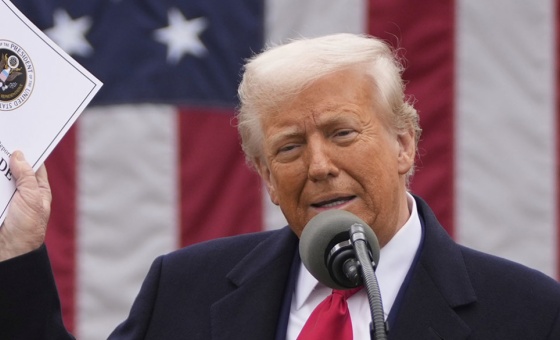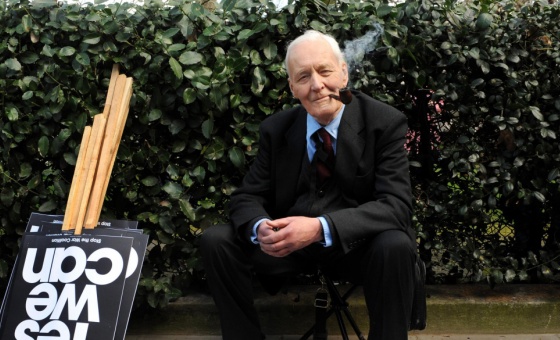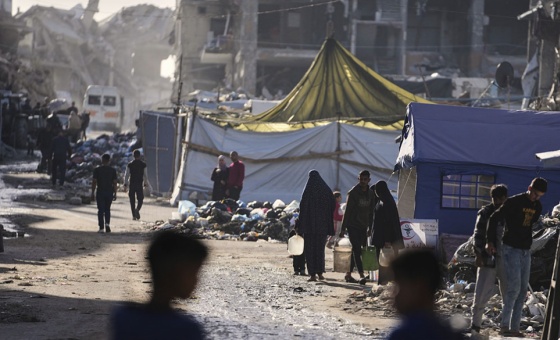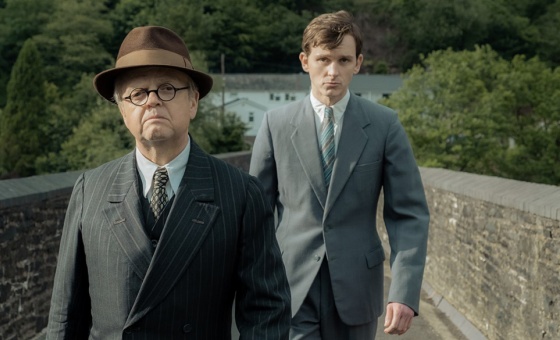This is the last article you can read this month
You can read more article this month
You can read more articles this month
Sorry your limit is up for this month
Reset on:
Please help support the Morning Star by subscribing here
Paul Robeson: The Artist
as Revolutionary
by Gerald Horne
(Pluto Press, £12.99)
THE AFRO-AMERICAN polymath Paul Robeson (1898-1976) was the son of a slave who, as a young man, was a brilliant athlete and an outstanding student with a degree in law.
By the 1930s, he had become an internationally known concert-hall performer whose deep bass baritone voice was recognised and revered across every continent.
He played Othello on the London stage and Broadway to critical acclaim.
He was the leading man in six major films including How Proud Was Our Valley, the story of the Welsh miners’ fight for jobs and communities in the 1930s.
He went to Spain in support of the republican government and the International Brigades in their struggle against international fascist military aggression.
And, above all else, he campaigned for his own people — black Afro-Americans so often denied civil rights, persecuted and always super-exploited by big business and the state.
Robeson explained his motivation when speaking to a packed Albert Hall on returning from Spain. “Every artist, every socialist must decide now where he stands... every artist must elect to fight for freedom or slavery.”
As Horne reminds us, Robeson chose to fight for freedom. While referring to the slave trade, he explained to his London audience that “the history of the capitalist era is characterised by the degradation of my people.”
In this period, and up to the deepening of the cold war in the 1950s, Robeson was indeed the “tallest tree in the forest.”
But, as Horne points out, he was not the only outstanding civil rights leader.
He was supported through good times and bad by leading figures in the movement, particularly Ben Davis and William Patterson, Communist Party leaders from the Afro-American community who were the two most foremost influences on Robeson’s political thinking and activity.
By the early 1950s, the cold war had really kicked in and Robeson became one of its first victims. His increase in attacks on institutionalised racism — Jim Crowism — together with his strongly expressed admiration for the Soviet Union were too much for the US authorities to bear.
When Robeson linked racism, imperialism, capitalism and colonialism with the threats that they posed to world peace and human survival, the ruling class took steps to shut him up.
His passport was confiscated on the grounds that his criticisms of the maltreatment of Afro-Americans should not be aired outside of the United States. Robeson was not to get his passport back for eight years.
Throughout the 1950s, Robeson faced constant harassment from the CIA, FBI and the McCarthyite House Committee on Un-American activities, before which he appeared on three occasions.
While Robeson retained his political integrity and refused to make concessions to nationalism and anti-Sovietism, the unrelenting attacks by the state and the media took their toll.
His opportunities to campaign were severely limited as many black organisations and most of the labour movement, consumed by cold war anti-communism, broke their links with Robeson.
Perhaps more importantly, his health was badly affected as his isolation from the mass movement became more marked.
And doubts grew in his mind about developments in the Soviet Union, particularly those related to anti-semitism and repression of political opponents by party and state.
He found it increasingly difficult in these circumstances to recover from a range of ailments.
Yet, through all this, Robeson remained loyal to the working-class and anti-racist movements, at home and abroad.
He was a socialist and internationalist to the end of his days and, as Horne emphasises, you cannot understand the successes achieved by the civil rights movement in the US during the 1970s and 1980s without an understanding of Robeson’s life.
He truly was the precursor of Martin Luther King and Malcolm X, as both leaders came to accept the class basis of racism in their later years.
The mass civil-rights movement which emerged in these years owes much to Robeson’s work in the previous four decades.
- The exhibition Paul Robeson: Black Star, exploring his status as one of the most important film stars of the 1930s and 1940s, runs at the BFI Southbank in London until October 31, details: bfi.org.uk







